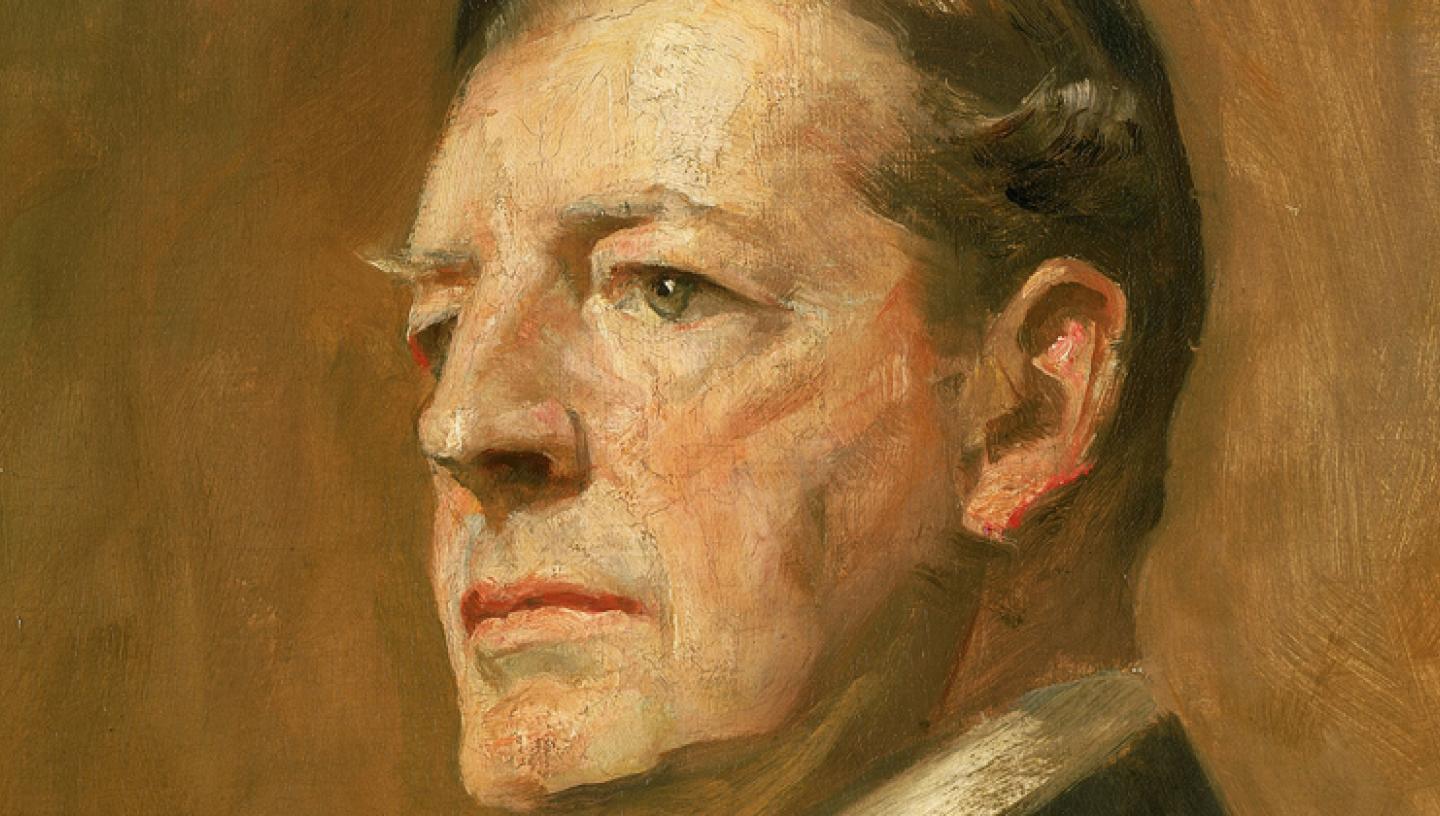
Essential Information
| Location |
National Maritime Museum
|
|---|---|
10 Aug 2014
August’s Item of the Month has been chosen to mark the centennial anniversary of the first major naval engagement of the First World War, the Battle of Heligoland Bight on 28 August 1914. It is a folder of papers from the Beatty collection numbered BTY/3/1 in the Archive Catalogue.
This is a just small sample of the material in the National Maritime Museum collections relating to Admiral of the Fleet David Richard Beatty, first Earl Beatty (1871-1936), a key figure during the course of the war at sea and naval policy in the years that followed. At the time of the Battle of Heligoland Bight, he held the glamorous position of vice admiral commanding the fast and powerful First Battle Cruiser Squadron. BTY/3/1 mostly contains reports made by Beatty and other commanding officers on the proceedings of 27-28 August, submitted to the Secretary of the Admiralty in the days that immediately followed.
The Heligoland Bight is the area of the North Sea between the Heligoland islands and the river mouths providing access to German ports, including Wilhelmshaven. The British offensive on 28 August was an interception of routine German patrols in the Bight by light cruisers and destroyers of the Harwich Force under Commodore Reginald Y. Tyrwhitt, and submarines under Commodore Roger J.B. Keyes. Two battlecruisers based on the River Humber were assigned as support. The operation was planned by Tyrwhitt and Keyes independently of the main British battle fleet. However, at a late stage and on his own initiative, Admiral Sir John R. Jellicoe, commander-in-chief of the Home Fleet, sent heavier warships from Scapa Flow.
Due to lack of co-ordination between the British squadrons and poor visibility, the battle was a confused affair. At the critical stage, Tyrwhitt found his force to be surrounded by German light cruisers. As borne out in the papers contained in BTY/3/1, Jellicoe later admonished the flotilla commanders for not reporting details of their course and speed when they signalled their positions. Despite failures in communication and the serious risks of operating in the German home waters, Beatty’s squadron was able to transform the situation, moving rapidly into the Bight and scattering the enemy ships.
The final version of Beatty’s report was published as an official despatch in a supplement to The London Gazette under the headline ‘Germans outmanoeuvred and outfought’. The German losses amounted to the destruction of three light cruisers and one destroyer, with well over 1,000 personnel killed, wounded and taken prisoner. On the British side, Tyrwhitt’s flagship, the light cruiser HMS Arethusa (1913), was hit many times by shellfire and three destroyers were also badly damaged, but no vessels were lost. The casualties were 35 killed and about 40 wounded. For the Royal Navy and the nation at large, it was a great morale boost during a dark period when the lack of any opportunity to make a decisive strike against the German High Seas Fleet had caused growing frustration.
BTY/3/1 also contains documents providing details of equipment malfunctions, the shellfire damage to HMS Arethusa and ammunition expended during the action. As an end piece, there is a letter conveying the appreciation of the Lords Commissioners of the Admiralty, following their reading of Beatty’s report on the proceedings of the First Battle Cruiser Squadron. This was addressed to Jellicoe, but forwarded with his compliments to Beatty, at the end of October 1914.
By way of contrast with the above administrative papers, I would also like to highlight a sketch relating to Lieutenant George Cliffe Hatch (1894-1918) and numbered HSR/V/19. Hatch was a young officer on the destroyer HMS Firedrake(1912) during the action, and afterwards included this sketch in a letter to his cousin Madeline Whitehead. It shows the German light cruiser Mainz (1909) burning and sinking, with British destroyers taking on board the survivors. A total of 348 crew members from the Mainz were rescued in this way. This item is particularly affecting, because it was created in the excitement following a British victory in the Heligoland Bight, but we know that Hatch lost his life during later operations in the same area of the North Sea. He was among the 48 crew members killed when the destroyer HMS Vehement (1917) was mined on 2 August 1918.
The Beatty papers in the Archive collection are extensive, covering his private life as well as his long naval career. Further details of the events they cover can be found in the collection level record BTY in the Archive Catalogue. Published accounts of the Battle of Heligoland Bight can be found in the following sources in the Caird Library catalogue:
- History of the Great War based on Official Documents: Naval Operations(5 volumes) by Sir Julian S. Corbett and Henry Newbolt, Longmans, 1920-31.
- Naval Staff Monographs (Historical) Volume 3: Monograph 11: The Battle of Heligoland Bight, August 28th, 1914, published by the Admiralty in 1921.
- From the Dreadnought to Scapa Flow: The Royal Navy in the Fisher Era, 1904-1919 (5 volumes) by Arthur J. Marder, Oxford University Press, London, 1965.
- Castles of Steel: Britain, Germany and the Winning of the Great War at Seaby Robert K. Massie, Jonathan Cape, London, 2004.
Graham, Archives Assistant